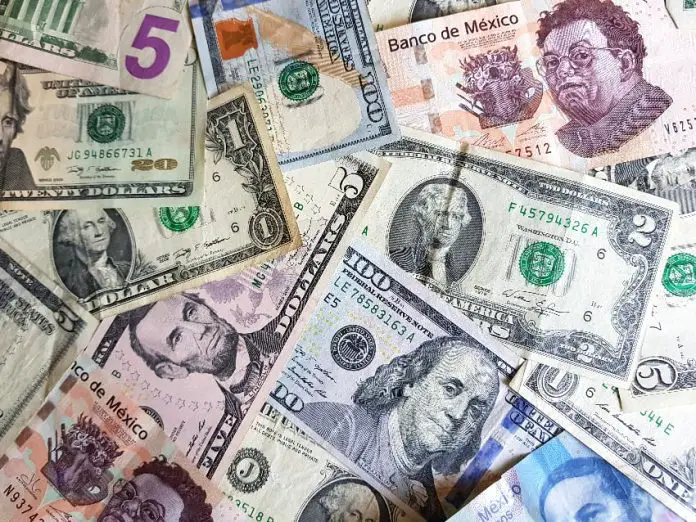The Mexican peso slumped to its lowest level against the US dollar in more than a year on Wednesday, as markets continue to react to the June 2 election results and the likelihood of Congress approving a controversial judicial reform later this year.
The peso weakened to 18.99 to the US dollar on Wednesday morning, but it subsequently strengthened and was trading at 18.74 to the greenback at 5:00 p.m. Mexico City time, according to Bloomberg.
The last time the peso traded above 18.90 to the greenback was in March last year, while the last time it went above 19 was in January 2023.
The 18.99 exchange rate represented a depreciation of over 10% for the peso compared to its pre-election level and a decline of more than 14% compared to its strongest position this year of 16.30 to the dollar in April.
The peso began to weaken soon after election results showed that the ruling Morena party and its allies won larger than expected majorities in Congress that put them in a strong position to approve a package of constitutional reform proposals President Andrés Manuel López Obrador submitted to the legislature in February.
The currency subsequently took a hit when Morena’s leader in the lower house of Congress announced that recently-elected lawmakers would seek to approve the judicial reform in September, and when President-elect Claudia Sheinbaum spoke on Monday about the ruling party’s legislative agenda.

Critics say that the plan to allow citizens to directly elect Supreme Court justices and some other judges, as well as some of AMLO’s other constitutional reform proposals, including one to disband a number of government autonomous agencies, will reduce the checks and balances on executive power in Mexico.
Sheinbaum has sought to calm markets, endorsing a set of economic commitments outlined by Finance Minister Rogelio Ramírez de la O, promising that “broad consultation” will take place before reform proposals are considered by Congress and declaring that investors have “nothing to worry about.”
But she has been unable to stop the slide of the peso.
Gabriela Siller, director of economic analysis at the Mexican bank Banco Base, said on X on Wednesday that concerns over the proposed reforms and Mexico’s budget deficit — 5.9% of GDP in 2024 — “are now the main determiners of the movements of the peso.”

She noted that the currency barely reacted to the United States Federal Reserve’s indication on Wednesday that it will only cut interest rates in the U.S. once this year.
Siller also said the peso barely moved after a Bank of Mexico press conference at which Governor Victoria Rodríguez Ceja stressed that the fundamentals of the Mexican economy are strong and noted that the central bank could take steps to “reestablish orderly conduct” in markets if they show signs of “extreme volatility.”
Earlier on Wednesday, the Banco Base analyst said that the probability of the peso depreciating to 20 to the dollar in the coming months had increased as a result of the “adverse scenario” that has “materialized” after the elections.
“New episodes of volatility between June and November can’t be ruled out as several events could generate aversion to risk about Mexico,” Siller wrote.
The analyst cited four events that could have an impact on the peso.
-
- The Republican National Convention in July at which Donald Trump is set to be confirmed as the GOP’s 2024 presidential candidate. Siller said that Trump could make “comments against Mexico” related to the issues of migration, public security and trade and that “his attacks could continue until November,” when voters in the United States will elect their next president.
- The commencement of the new Congress in Mexico on Sept. 1, when Morena and its allies will seek to approve the proposed judicial reform. If the reform is approved and “legal uncertainty for companies” follows, the peso will come under additional pressure, Siller said.
- The commencement of the new government on Oct. 1, the date Sheinbaum will be sworn in as president. After that date, it will become known whether there is “distance” between López Obrador and Sheinbaum’s government, Siller said.
- The United States elections on the first Tuesday in November. Siller said that a Trump victory “would represent a greater risk for Mexico” considering that a review of the USMCA free trade pact will take place in 2026. The review “could be used as a tool to pressure Mexico on other issues, like migration,” Siller said.
Mexico News Daily
